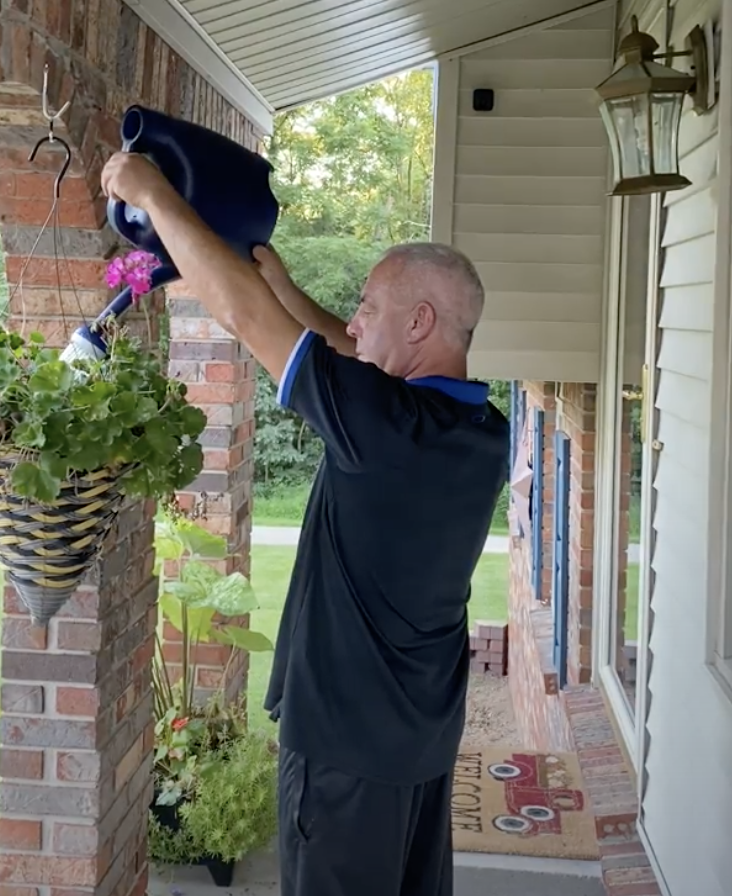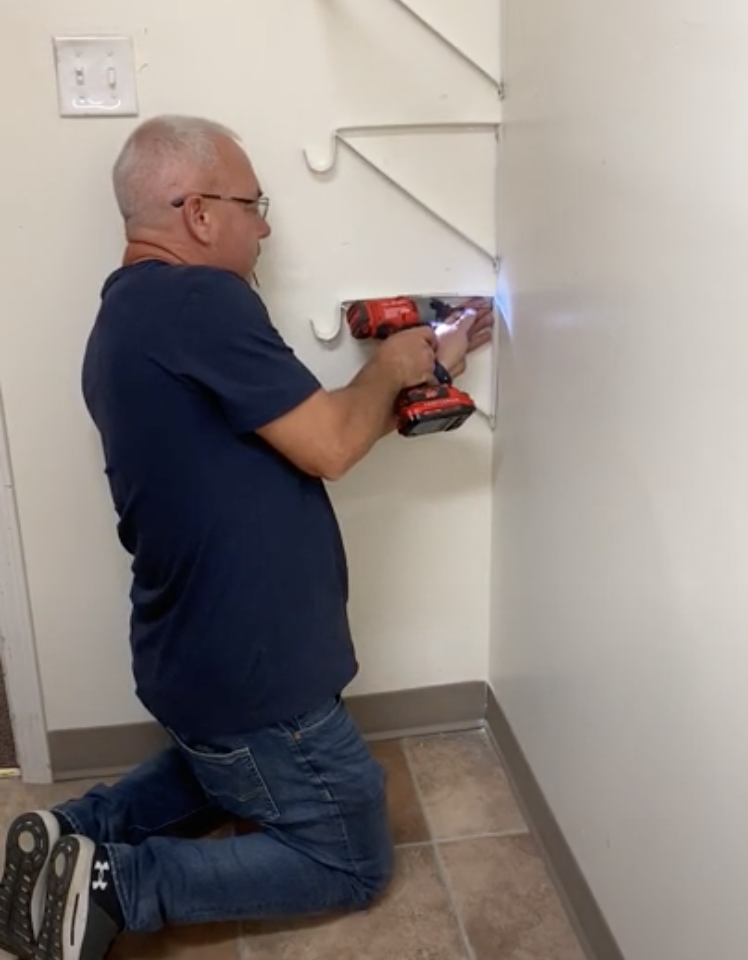- What is the rotator cuff and how does it work with your bicep?
- How do you know if your rotator cuff is damaged?
- How can rotator cuff and bicep surgery help patients heal?
- Are you living with shoulder pain?
John H. had a work-related accident that severely damaged his rotator cuff and bicep. The injury caused almost complete left arm immobility. John says, “I literally could not move my left arm.” Then he came to Travis Clegg, M.D., a board-certified orthopedic surgeon, for help.
Dr. Clegg performed rotator cuff and bicep repair surgery resulting in 100% mobility again for John, allowing him to get back to work and the things he enjoys doing most. Today, he says, “The biggest benefit of my surgery was actually regaining the use of my arm. I feel really great.”
What is the Rotator Cuff and How Does it Work with Your Bicep?
The rotator cuff is made up of four muscles and tendons whose job is to keep your shoulder joint in the socket. The bicep is the big muscle running on the outside of your shoulder. The upper end of the bicep attaches to the top of the shoulder socket. Because these structures work so closely together when a shoulder injury occurs, there may be involvement of both the bicep and the rotator cuff. Together, these complex structures help you do all of the normal lifting activities that make up your day.

Most people don’t pay attention to the rotator cuff until it is injured. The rotator cuff can degenerate from overuse or an injury can cause these tendons to tear. The bicep muscle can be either partially or fully torn, as well. That makes surgery on these structures an individualized process.
When an acute injury occurs, a patient may feel a sudden pain in the shoulder or upper arm along with a popping sound. If the rotator cuff and bicep are worn away over time, cramping, tenderness, and pain may occur along with arm weakness. These symptoms come on gradually and can become severe.
Whether the bicep and/or rotator cuff injury occur suddenly or gradually, the chief symptom is pain even at night when you are trying to rest. Gradual onset of symptoms may be alleviated at first with over-the-counter pain medications or even prescribed medications and physical therapy. But these conditions typically do not heal on their own and often get worse. That’s where surgical intervention may help.
In John’s case, his injury was acute and sudden. That’s when he called Dr. Clegg for help.
How Do You Know if Your Rotator Cuff is Damaged?
Pain, arm weakness, and the inability to function normally are all signs your rotator cuff is damaged. John’s pain was so bad he couldn’t lay on his left side. This is a typical experience of a rotator cuff injury. A bicep and rotator cuff team can make simple tasks like putting on clothing or brushing your hair difficult if not impossible.
Traumatic injuries as well as repetitive motion and overuse can cause the kind of damage John experienced. John H. and his wife run a reseller retail store and he is constantly moving furniture and other items around the store or to-and-from delivery trucks. That’s exactly where his injury occurred. John says, “I slipped on a trailer moving furniture and fell on a piece of steel. I tore my rotator cuff and bicep.”
John knew the damage was severe, but he says, “I was scared to have the surgery. I’ve heard a lot of rumors about it being painful, but after the surgery I got 100% use of my arm again.”
How Can Rotator Cuff and Bicep Surgery Help Patients Heal?
 When the delicate tendons in the rotator cuff or bicep detach or tear, surgical intervention can reconnect the loose or torn pieces and allow the patient to heal. The surgery is typically done arthroscopically, which is less invasive from traditional open procedures.
When the delicate tendons in the rotator cuff or bicep detach or tear, surgical intervention can reconnect the loose or torn pieces and allow the patient to heal. The surgery is typically done arthroscopically, which is less invasive from traditional open procedures.
Arthroscopic rotator cuff and bicep surgery is performed by making several small incisions in the shoulder area. The surgeon will use an arthroscope, or a small flexible tube with a camera, to see inside the shoulder joint. Small instruments are inserted through a second incision so the doctor can reconnect the torn tendons. Both large and small tears in the shoulder area can typically be repaired in this way. The goal of the surgery is to restore full strength, and range of motion to the shoulder and arm while alleviating pain.
John says, “I had rotator cuff and bicep surgery back in January 2020 with Dr. Clegg and I feel absolutely great.” Dr. Clegg describes the results of these surgeries very positively. He says, “We got him (John) full range of motion, pain free; he’s really doing well.”
Recovering from rotator cuff and bicep surgery typically takes six to eight weeks, depending on the type of repair and the patient’s situation. Most patients can return to normal activities after the eight weeks and most also undergo some form of physical therapy to aid recovery. If the patient plays contact sports, a full return to the activity is possible after four to six months.
In John’s case, he was back to work and normal activities about two months after the surgery was complete. John commented that Dr. Clegg and his team carefully described every step of the surgery and the recovery process. He says, “Even after, to follow-up, he called me to check on me several times.”
Are You Living with Shoulder Pain?
Each year, millions of Americans experience the pain of a rotator cuff or bicep injury. Fortunately, there are several treatments available to help, including the successful surgical intervention that John experienced with Dr. Clegg.
Today, John is back to work and has full use of his arm again.
He says, “I’m always lifting furniture. I’m able to do that again. I feel 100% like I never even had any surgery at all.
Dr. Clegg is very pleased with John’s outcome. He says, “It’s good to see him back. It’s good to see a smile on his face.” However, the admiration and respect between this doctor and his patient is mutual.
John says, “I wouldn’t have anyone but him do my surgery. In the future, if I ever broke another bone, I wouldn’t even think to go to anybody else. It’ll be Dr. Clegg.”
